Episode #376: What We Got Wrong (and Right) in Our Last Full-Day Math PD
LISTEN NOW HERE…
WATCH NOW…
Planning a full-day professional development session for math can feel like a golden opportunity—and a daunting challenge. How do you make the most of extended time with educators while keeping energy high, engagement strong, and math learning impactful?
In this episode, we reflect on our most recent full-day math PD session and unpack the choices we made—what paid off and what we’d do differently next time. From structuring the day to managing pacing, promoting interaction, and avoiding afternoon burnout, we share the small and big moves that helped (or hindered) the experience. Whether you’re a math coach, consultant, or school leader planning your next full-day math session, this episode offers honest insights to help you design math professional learning that’s worth every minute.
In this episode, you’ll discover:
- Why the structure and flow of the day matter as much as the math content itself.
- Strategies to maintain engagement and energy when fatigue kicks in.
- Lessons we learned about creating space for reflection, collaboration, and impact.
Attention District Math Leaders:
Not sure what matters most when designing math improvement plans? Take this assessment and get a free customized report: https://makemathmoments.com/grow/
Ready to design your math improvement plan with guidance, support and using structure? Learn how to follow our 4 stage process. https://growyourmathprogram.com
Looking to supplement your curriculum with problem based lessons and units? Make Math Moments Problem Based Lessons & Units
Be Our Next Podcast Guest!
Join as an Interview Guest or on a Mentoring Moment Call
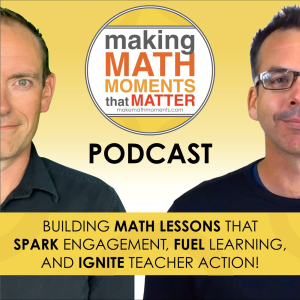
Apply to be a Featured Interview Guest
Book a Mentoring Moment Coaching Call
Are You an Official Math Moment Maker?
FULL TRANSCRIPT
Jon Orr: All right, let’s talk about, you know, some what goes right when we plan professional development and you know what sometimes, you know, doesn’t go right and then how to reflect and this is coming off a full day session that Yvette, myself, Kyle hosted in person. We flew out to this conference center. We met with some key individuals all day long. We were talking about goal setting. We were talking about how to structure your math.
improvement plans, a lot about things of what we’re talking about here on these Thursday released episodes. And so what we want to do today, you being say a listener who is a math coordinator, maybe a math coach, maybe an administrator, or maybe a teacher leader, someone who is say leading mathematics and structuring professional development, we want to kind of unpack, like what do we do right in that full day session and what could we do differently next time to maximize
the learning that took place. So we’re gonna dig in. We’re gonna do this in live time here with you and kind of unpack where we went and what we could be doing better. Yvette, let’s go.
Yvette Lehman: think we all agree that having a full day with educators is a gift, but it’s also a challenge. And I think I’m hyper aware of that because I’m a terrible full day participant. Like I have a book three, I’ve got three hours in me and then I’m done. Like I’m like overload, like there’s enough, right. It’s like there’s so many ideas being presented. And sometimes I find when I’m in a full day PD,
It’s like I haven’t even processed the last idea and the presenter is already onto the next one. And so I do, get fatigued very easily and then I start to disengage. So I think I’m hyper aware of the fact that a full day PD, as much as it’s an opportunity, it can also be a challenge.
Jon Orr: Huge challenge, huge challenge. I think you are right to kind of go like, if I’m thinking, we’re thinking about planning whole day, and you’re saying like when the presenter is moving from the one idea to the next, but like if it’s definitely brain overload, if the whole day is new idea, new idea, new idea, or walking through a bunch of things you could do.
And that can be a challenge, right? Because you’re just, you’re going to be battling overload. You’re going to be battling fatigue in the afternoon. know, everybody’s coming back from lunch. You know, you might have had the ice cream and you might have, you know, said, hey, I’m gonna enjoy my lunch here. And then all of a sudden it’s like, right, it’s one o’clock now. And I’m feeling the sluggish. You’re battling that for sure as a presenter and kind of managing that. you know, I think when we think about what we…
you know, what we did, we did a little bit of the column A, we did a little column B right there, you know, and we’ll get into maybe what we’ll do differently next time. But let’s start with like what we feel like we did right. But let’s set the stage two. Like I said, just a few minutes ago in the introduction is that we were working with a room full of leaders, you know, we had probably between 75 or 50 and 75 leaders in the room who are a mix.
a mix of coaches, a mix of administrators, and a mix of, may say, consultants or coordinators. And that was who was with us. Plus, I think there was a scattering of classroom teachers, maybe teacher leaders that say the coordinator or the administrator dragged along and said, hey, this is going to be great for us. The purpose of the day was for leadership in mathematics. So we had a big room.
full of those individuals. Again, the purpose here was to unpack how to design math improvement plans for sustainability, how to design math improvement plans for growth and making sure that we’re aligned to across, the district or our school in those ways. So much of the same things we’ve been talking about here on the podcast. So that’s setting the stage. We started at 8 a.m. and we ended at 3 p.m. with a lunch and a couple breaks in there. So typical PD full day kind of timeline you can imagine. All right, Yvette, what did we do right?
Yvette Lehman: I think off the bat, the first thing I would say is we had multiple presenters and that’s something that we advocate for a few reasons. One is that it’s helpful for the audience to hear different voices. When you hear the same voice all day long, it becomes monotonous. The other advantage that we always recognize, and we actually talked about this during lunch on Friday, is that when you’re speaking, I’m reading the room. It’s hard to read the room and speak at the same time.
but having somebody be more of the passive observer to read body language and read facial expressions, then we can kind of come together and sometimes we pivot throughout the day. Like I remember saying to you at one point on Friday, let’s do math now. You know, it wasn’t in our schedule. We’d actually had it later in our agenda, but I said, we need to, you know, infuse some, we need to shift. I called it a palette cleanse. Like we just need to shake things up here.
things are getting a little bit too monotonous. So I think having multiple presenters is something that we always try to do and it’s a strength of our delivery.
Jon Orr: For for sure. I appreciated that pivot in the moment because you’re right, we were observing, say, a little bit of like too much of us talking, you know, and not enough actual doing. Which actually I think brings us to, I think, we, in a way, a strength. And then again, we’ll reflect a little bit more on that component about the mix between.
how much theory and practical we want to embed in a full day session. When you think about on one hour session, a lot of the times it’s theory. It’s like, here’s the idea, here’s what it looks like, here’s what it could look like, here’s things to consider. When you go to a conference, you tend to get that and not the practical because of time. But when you have a full day, now you have to manage the balance between how much theory do I want to give my participants and my audience and then how much.
practical, like work time, can we actually embed in there and what’s the, what’s that balance? So, you know, part of that is, is I think one of the strengths is, is that every time and we’ve got this, you know, written, you know, written all over, you know, our walls and in our desks that whenever we do professional development, we do math and, that’s a major component of not only say what we want to do in PD sessions, but also the districts that we support in our four stage process is,
we need to embed more mathematics with adults collaboratively as much as possible because we know that’s the gatekeeper between having flexible classroom teachers versus teachers that are still trying to grapple and figure out what does this strategy look like? And when we have teachers who have, say, solid conceptual understanding of math, that’s easier to accomplish as a pedagogical move. So we always make sure that we
do, you know, get them get our participants to do math. And, and a lot of times when I think, I think someone said this at our session is that they were so glad that we did the math together, because a lot of times, the you know, we assume, if we’re designing professional development, we should talk about what the moves look like, or here’s a lesson you could do without actually engaging those participants in in the lesson so that they’re doing the mathematics. And I think a lot of
A lot of presenters will overlook that saying, I got a room of professionals. But we tend to assume there’s a lot of like certain level of mathematical understanding in the room based off who’s there, which in a way is an assumption that we should not make. We should not say assume that everybody is thinking the same way about say fractions or decimals. And we were talking about, I think we did proportions and know, on rates. So, you know, you could.
every in every time we’ve done this, like I always assume it’s like, yeah, they’ll be able to do this. But every time we’ve done this, new mathematical epiphanies are happening in the room. And these are these are math coordinators, math coaches that are supporting this in their schools. So the assumption we need to slide to the side and make sure that we are planning for doing math at every PD session, when we have adults together.
Yvette Lehman: Yeah, so I agree. That to me is one of the strengths of our professional development style, which is we always do the math and we often…
position our participants as students in our own classrooms so that we can notice and name some of our teacher moves. So things like, for example, visibly random groups is something that we’ve adopted through our understanding of BTC. That’s something we use in our sessions. We get our participants up at vertical non-permanent spaces because we believe that if we get them up out of their seats, working out the boards, they’re more likely to engage in the mathematics. So I think those were strengths. It was so interesting, you said too, how
there’s always an epiphany. I had an epiphany on Friday and it was my own task. Somebody solved it in a way that I have never seen and that I’ve never considered. So, you know, even if we are, you know, we believe we’re mathematically proficient, usually there’s always another strategy, another model, another way of approaching it that’s going to build our own capacity. So that I think is a highlight from what we did on Friday. Now let’s talk about, so maybe I’ll summarize.
Like we think that it’s important for there to be ideally multiple voices when possible and to find a partner to present with. Like who is your partner? And I’ve often said even to our districts, if you’re the only math person in your district, doesn’t have to be a math person. It could even be your language arts partner, but just having somebody else in the room to read the body language, to give you feedback, to make decisions about pacing is really helpful.
Infusing math throughout the day and actually engaging in math for the sake of math to strengthen our own proficiency was a strength. And we did make an effort to support discourse as much as possible. So we built in protocols routinely where participants were asked to turn and talk or get up out of their seat and talk with other people in the room. I think that’s what we did well.
Jon Orr: Yeah, yeah, no, and I would just I would just add that I think with the math, I think we had multiple opportunities for that, right? It wasn’t just like, hey, here’s the math time, we embedded it throughout. Like you said, we called an audible. And we did it earlier. We had then we had planned, but we had still planned to do say two sessions of a math task to cleanse the palette, but also make some points about what we were trying to encourage and teach through say that section.
around, say, building capacity with educators as a major component of math improvement planning. So that for sure. I think one of the things that also I think we did well here in summary that we had mentioned already is kind of this balance between some practicality, and I think this is going to lead us into what we could do differently next time, with theory. And so we did a little bit of a balance there, which is great because it wasn’t all theory and it wasn’t all practical.
Now, if we talk about what would we do better next time, think, you know, reflection wise, and again, this is us on the cuff, you know, reflecting with each other how we did on that Friday. One of the things that’s coming to my mind is that I wish we had done more practical and less theory, because I think we could be more concise with our theory around the four stages and the reasons behind those four stages, but then specifically given more…
thought and work time to the audience to really sink their teeth in. And I think we talked about this yesterday is that the balance is tough, because it’s like, if I give educators an hour of the day to really sink their teeth in, or maybe because if you think about like, is 10 minutes enough, like, it doesn’t feel like 10 minutes is enough to like, think your mind and get in, you know, immersed into the to the work that you need to do, which was we were thinking about drafting, brainstorming what visions for math should be.
what objectives we should be working on, what some of the action items we should be coordinating with those objectives. So we were talking about all those things. And when I, and I know that when I need to sink into a task or like a thought exercise, 10 minutes, I’m going like, that’s not enough time. So I don’t even start, right? So it’s like, but then it’s like, is 20 minutes enough time to start? Or is, if I, if we give an hour, then is that hour useful? Is that hour maximized? Or is that the audience is like,
Well, I could sink an hour in here, but if I do this work now and my teammates aren’t here, do I have to do it later? So there’s sometimes a balance of thinking about what the theory you’re trying to provide and how much practical time and work time you want to have, because we wanted them to sink into that work and then us be flexible for feedback along the way. And I think if we had to do something better, I would want more of that think time than we gave this time around.
Yvette Lehman: So that kind of goes to, I think our reflection on the day was, you know, the people doing the talking or doing the thinking, and did we have enough of a balance between, like, how much did we talk? Was it 50 %? Was it 75 %? It’s probably more like 75, and it’s too much, you know? It’s like, we know that. We know that in a classroom, if it was that much teacher talk, if that much monologuing, it’s not impactful.
So I think you’ve just highlighted one of the things that we would do differently. It’s almost like set the stage, send them off to work. Set the stage, send them off to work, and then be there to be responsive, answer questions, help them work through the actual thinking and doing for themselves.
Jon Orr: Right, right, for sure, for sure. What would you say is another specific change we would make to maybe the structure of the day?
Yvette Lehman: So I think that one thing we will think about for next time is a room of 50 plus people for an entire day. It’s probably not high leverage. We always talk about in the classroom, like barriers that create passive participation, which is like anonymity. So when there’s physical desk between you and the speaker, when you’re at the back of the room, when there’s all these things that, you know, disengage people, even if it’s not intentional.
And so I think one of the things that we considered is, you know, is 50 plus people in a room for an entire day impactful? The room itself gets boring. The temperature in the room starts to rise. It’s almost like we get them up and moving, but we’re still in the same space all day long with the same people. And so one of the things we considered changing for next time is do we build in breakout rooms?
Because we have multiple presenters, we could break off into smaller groups. And we know that naturally in a smaller group, there’s more engagement and participation because you can’t be anonymous. You’re not hiding in a sea of 50 plus people. You’re one of maybe 20 in the room. It’s more intimate. People tend to be more vulnerable and ask questions that are more specific to their role, their environment, their conditions. And so that was one of our considerations are presenting for a full day, staying in the same room as a large group the entire day doesn’t seem super impactful.
Jon Orr: So I 100 % agree with that and I’m so glad that you—we made that kind of thought afterwards is that because you could imagine that, you know, if we do the morning or part of the morning where we are all together to talk about some of the big ideas that we may have been, you know, overlooking in math improvement planning but then go, okay, now Yvette is going to, you know, take this group over here and really go dig into this aspect where she’s the expert in that area and then all of sudden Kyle is—
is taking another group to unsafe packing, to building capacity with teachers and helping them in that small group format. And let’s say I was taking a group and really unpacking, are those questions around objectives and key results that are really now rattling around in our mind versus the morning and giving people specific feedback on where they are currently in that process that we started in the morning and then rotating through those pieces can keep people moving. It could keep all of a sudden the fresh ideas.
you transition from one idea to the next. So you’re, you’re still maybe not doing as much practical time when you’re moving from group to group because you’re doing breakouts. But you’re that transition, I think can be helpful for teachers to like still get what they need, but also, you know, be a little bit more. What you you said is, you know, a little bit more focused because of the smaller group size. So we are 100 % doing that next time.
Yvette Lehman: Yes, lessons learned. I think too, it’s in one of the challenges we faced is that the room was really diverse. We had different people in different roles. And so I imagine that that would be similar. Let’s say you’re hosting a full day PD session for K to eight teachers. You know, the experience of a K teacher compared to a seven teacher is going to be drastically different. And so what the breakout rooms allow is
you can have everybody together K-8 for that high level theoretical awareness piece alignment vision. But then when you want to get specific, it’s almost like when we talk about in our book that idea of, you know, collaborative learning that’s going to be forward moving, where it’s like I can actually take what I did today and apply it next week in my classroom, in my school, in my role. In the smaller breakouts, we’d be able to be more responsive.
to the person in the room. even talked about, we do our breakouts and have them rotate based on role? So that we’re talking to coaches, we’re talking to teachers, we’re talking to principals, that the information that we’re delivering can get more specific. Because when you’re talking to a broad audience, you have to almost stay pretty high level superficial. But if you’re talking specifically to coaches,
You can talk about the constraints that they work under and the conditions that they work in and be really specific about, okay, what does this mean for you next week? What is your immediate next step? So I think that you mentioned, you know, that balance between theory and practice would be something we want to be more mindful of. And then our other change to this session moving forward will be, we’re not going to stay in the whole one room all day long with the entire large group.
We’re going to diversify. We’re going to get more specific. We’re going to get into smaller groups and we’re going to be more responsive in the moment by allowing more vulnerability from our participants.
Jon Orr: Yeah. Now thinking about that, again, we’re just thinking off the cuff here. Let’s say, because we were imagining, okay, there’s the three of us, because we had three there, it makes sense to cycle through those, say, three stations. But if there’s two of us, we still could do that work. But let’s say you’re solo. Let’s say you were there by yourself. Do you see a way to still get to that if you’re, is there a way to be like, okay, that.
I we’re going to take half the group and we’re going to do this. So the group is smaller, but then the other half is now doing that planning work time. And then we rotate some of that. Are you imagining some of that if you’re solo? Or is it like, nah, can’t do it if you’re solo.
Yvette Lehman: I it’s for sure possible. I think one thing that just came to mind is if you were, for example, going to break the groups up so that you had people in similar roles in different rooms, if the task was super clear, right? Like if the instructions and the task that they were going to be engaging in was super clear and explicit, you could then rotate through those rooms and provide feedback on the work so far. So I think it’s, I still think it’s worthwhile, even with a single presenter, even just the idea of a new environment, new space, new people at your table is enough to shake off some of the afternoon fatigue.
Jon Orr: Yeah. Totally, because if you think about it, it’s like if you were at tables and go, okay, for this hour, I’m the only presenter, for this hour, I know I want the afternoon to be a work period, but I’m gonna provide feedback. But if we section it off, we’re like, everyone’s in the same room. This hour, we’re all gonna work on this. This hour, we’re gonna switch focuses and work on this. And then this hour, like why not just put three different rooms and then have them rotate and then you’re bouncing between the rooms? And it’s the same thing. It’s just.
Now, because you’re standing up and transitioning to a new environment, it actually can cause that switch of focuses and start the refresh. Because every transition, you’re going to get that refresh. And you can strategically place it around your breaks when you do it that way. All right, summarize.
Yvette Lehman: Okay, so things that we would do again, a lot of math, for sure, always. We would use some of our best practices from the classroom. So explicitly highlighting the learning goal, getting teachers up to work at vertical nonpermanent surfaces, invisibly random groups. Those are things that we think work. They infuse some energy and some discourse into the room. We like having multiple presenters.
We definitely like building in protocols to support discourse throughout the day. We know that the person doing the talking is doing the thinking, but in reflection on our day, we did way too much talking. So that is something that we wanted to be mindful of moving forward. You mentioned balancing the practical with the theory. And we said, you know, if it’s a full day, I’m telling you the fatigue is real. And I think that like you and Kyle are some of the most dynamic presenters I’ve seen. You’re engaging and you have…
like voices that capture attention people will still be sleeping. Like it’s just, like what I’m saying is if you can’t do it, I don’t think most people can keep people’s attention for an entire day. It has nothing to do with you or what you’re saying or how you’re saying it. People just burn out. So in the afternoon in particular, we need to shake it up, change the environment, change the groups, you know really try to make it feel fresh and invigorating in order to otherwise it might as well just be a half day because you’re really not getting much out of the afternoon.
Jon Orr: Totally, Yep, and so those are some of the things that we would do differently. Now this community is bigger than just us. So if you’ve got some suggestions for us, hit the link in your app that sends a message to us or respond to any of the emails that you’ve received from us this week by saying, hey, just listen to this episode, which is episode 376, and say, hey, John, Yvette, this is what I would do when I have my full day session.
Here’s some suggestions and then on our next episode we can bring those to light to start off the episode and kind of say, based off the last episode here are some suggestions from the Make Math Moments community. So let us know. That’s your call to action today. We’ll talk soon.
Thanks For Listening
- Book a Math Mentoring Moment
- Apply to be a Featured Interview Guest
- Leave a note in the comment section below.
- Share this show on Twitter, or Facebook.
To help out the show:
- Leave an honest review on iTunes. Your ratings and reviews really help and we read each one.
- Subscribe on iTunes, Google Play, and Spotify.
DOWNLOAD THE 3 ACT MATH TASK TIP SHEET SO THEY RUN WITHOUT A HITCH!
Download the 2-page printable 3 Act Math Tip Sheet to ensure that you have the best start to your journey using 3 Act math Tasks to spark curiosity and fuel sense making in your math classroom!
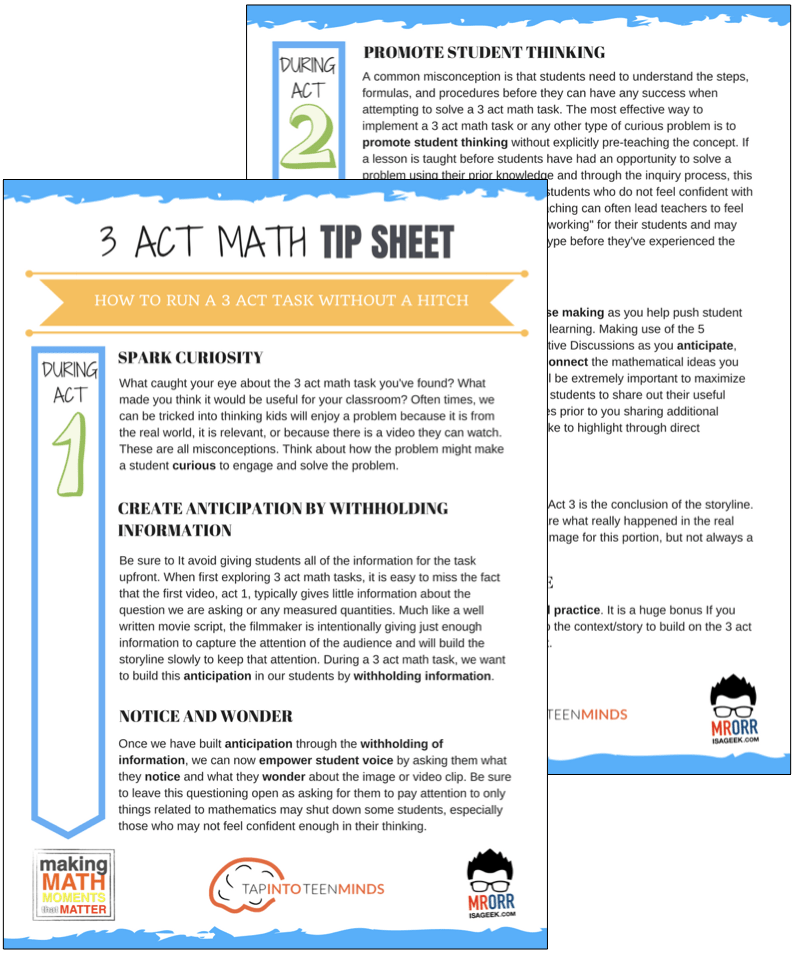
LESSONS TO MAKE MATH MOMENTS
Each lesson consists of:
Each Make Math Moments Problem Based Lesson consists of a Teacher Guide to lead you step-by-step through the planning process to ensure your lesson runs without a hitch!
Each Teacher Guide consists of:
- Intentionality of the lesson;
- A step-by-step walk through of each phase of the lesson;
- Visuals, animations, and videos unpacking big ideas, strategies, and models we intend to emerge during the lesson;
- Sample student approaches to assist in anticipating what your students might do;
- Resources and downloads including Keynote, Powerpoint, Media Files, and Teacher Guide printable PDF; and,
- Much more!
Each Make Math Moments Problem Based Lesson begins with a story, visual, video, or other method to Spark Curiosity through context.
Students will often Notice and Wonder before making an estimate to draw them in and invest in the problem.
After student voice has been heard and acknowledged, we will set students off on a Productive Struggle via a prompt related to the Spark context.
These prompts are given each lesson with the following conditions:
- No calculators are to be used; and,
- Students are to focus on how they can convince their math community that their solution is valid.
Students are left to engage in a productive struggle as the facilitator circulates to observe and engage in conversation as a means of assessing formatively.
The facilitator is instructed through the Teacher Guide on what specific strategies and models could be used to make connections and consolidate the learning from the lesson.
Often times, animations and walk through videos are provided in the Teacher Guide to assist with planning and delivering the consolidation.
A review image, video, or animation is provided as a conclusion to the task from the lesson.
While this might feel like a natural ending to the context students have been exploring, it is just the beginning as we look to leverage this context via extensions and additional lessons to dig deeper.
At the end of each lesson, consolidation prompts and/or extensions are crafted for students to purposefully practice and demonstrate their current understanding.
Facilitators are encouraged to collect these consolidation prompts as a means to engage in the assessment process and inform next moves for instruction.
In multi-day units of study, Math Talks are crafted to help build on the thinking from the previous day and build towards the next step in the developmental progression of the concept(s) we are exploring.
Each Math Talk is constructed as a string of related problems that build with intentionality to emerge specific big ideas, strategies, and mathematical models.
Make Math Moments Problem Based Lessons and Day 1 Teacher Guides are openly available for you to leverage and use with your students without becoming a Make Math Moments Academy Member.
Use our OPEN ACCESS multi-day problem based units!
Make Math Moments Problem Based Lessons and Day 1 Teacher Guides are openly available for you to leverage and use with your students without becoming a Make Math Moments Academy Member.
Partitive Division Resulting in a Fraction
Equivalence and Algebraic Substitution
Represent Categorical Data & Explore Mean
Downloadable resources including blackline masters, handouts, printable Tips Sheets, slide shows, and media files do require a Make Math Moments Academy Membership.
ONLINE WORKSHOP REGISTRATION

Pedagogically aligned for teachers of K through Grade 12 with content specific examples from Grades 3 through Grade 10.
In our self-paced, 12-week Online Workshop, you'll learn how to craft new and transform your current lessons to Spark Curiosity, Fuel Sense Making, and Ignite Your Teacher Moves to promote resilient problem solvers.
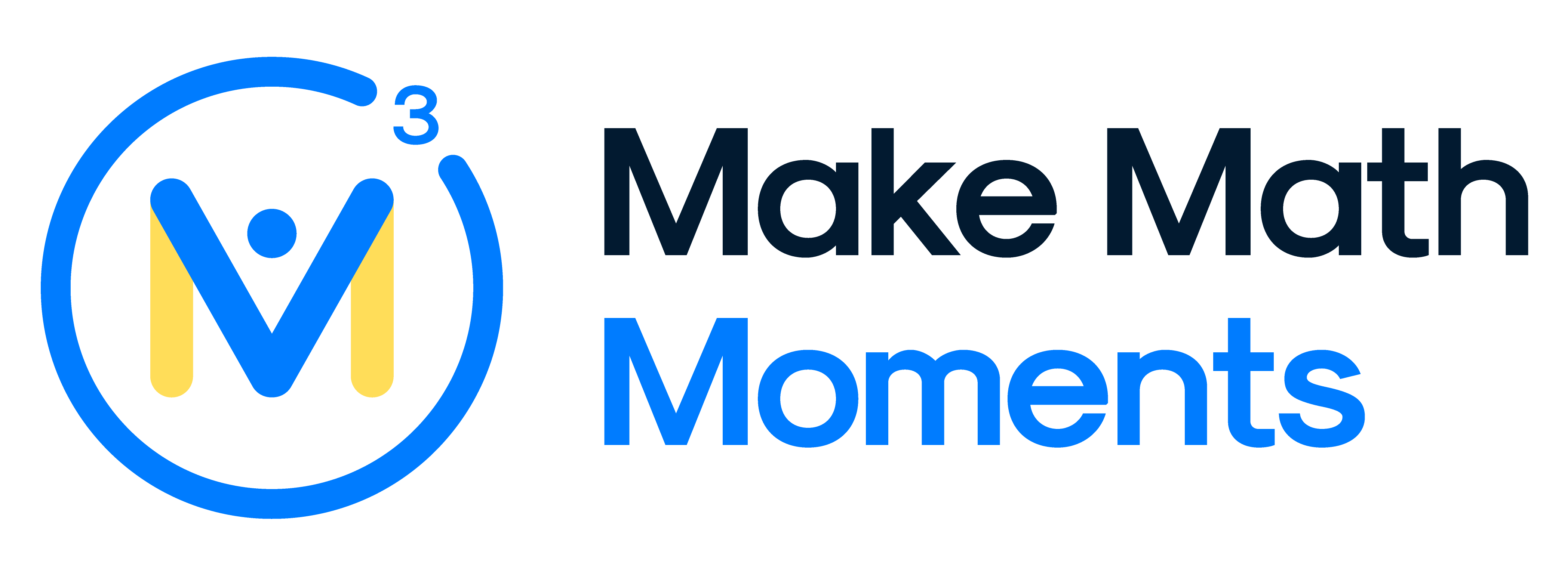



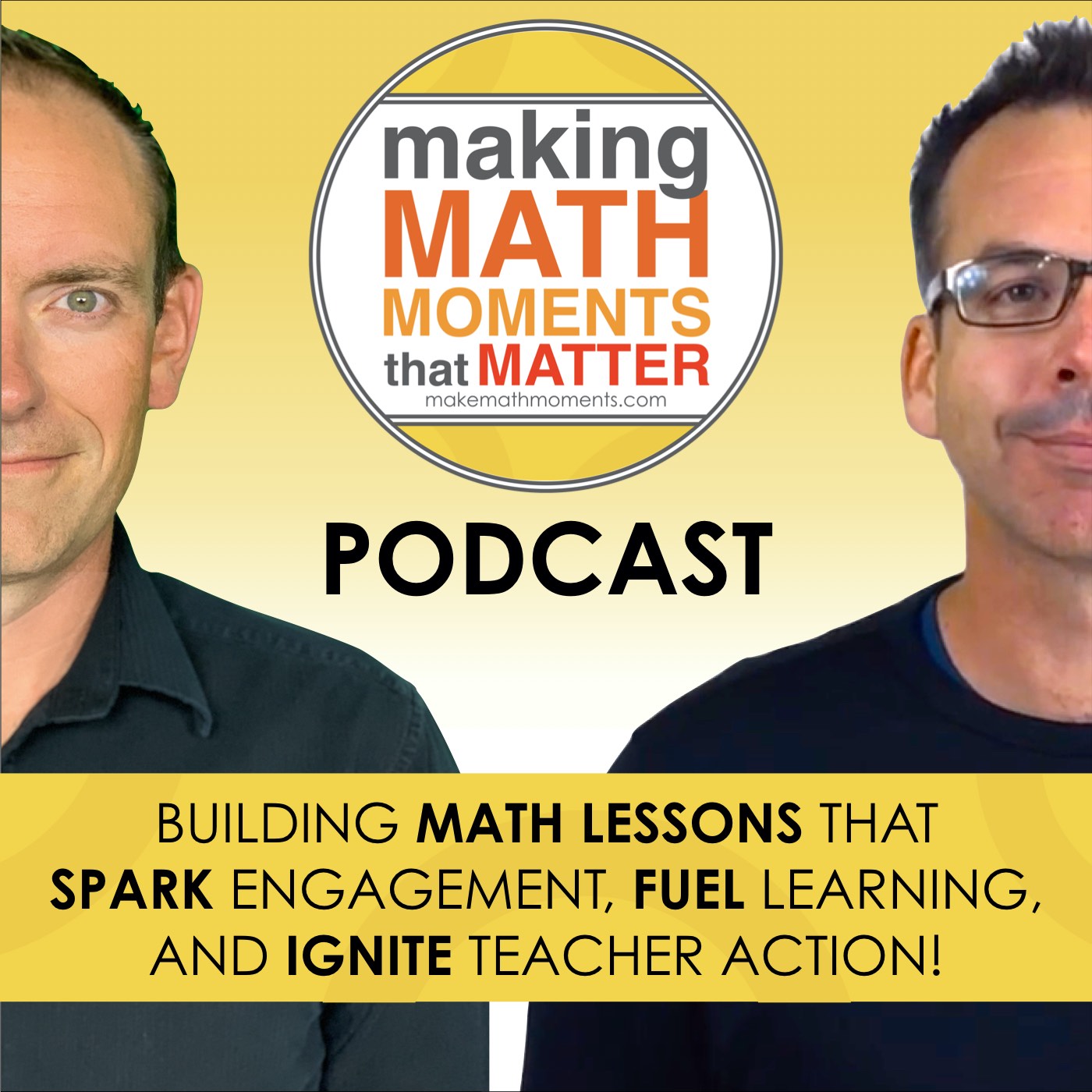


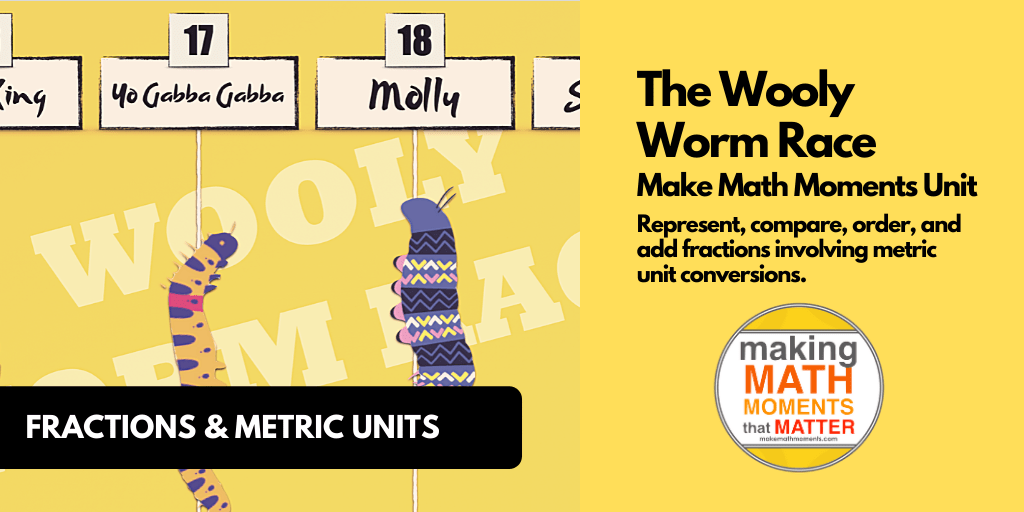
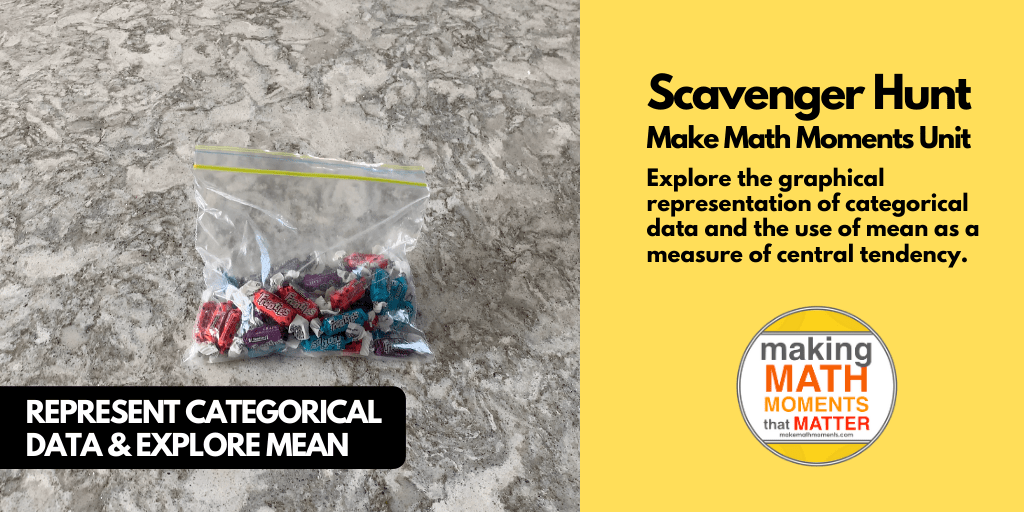

0 Comments